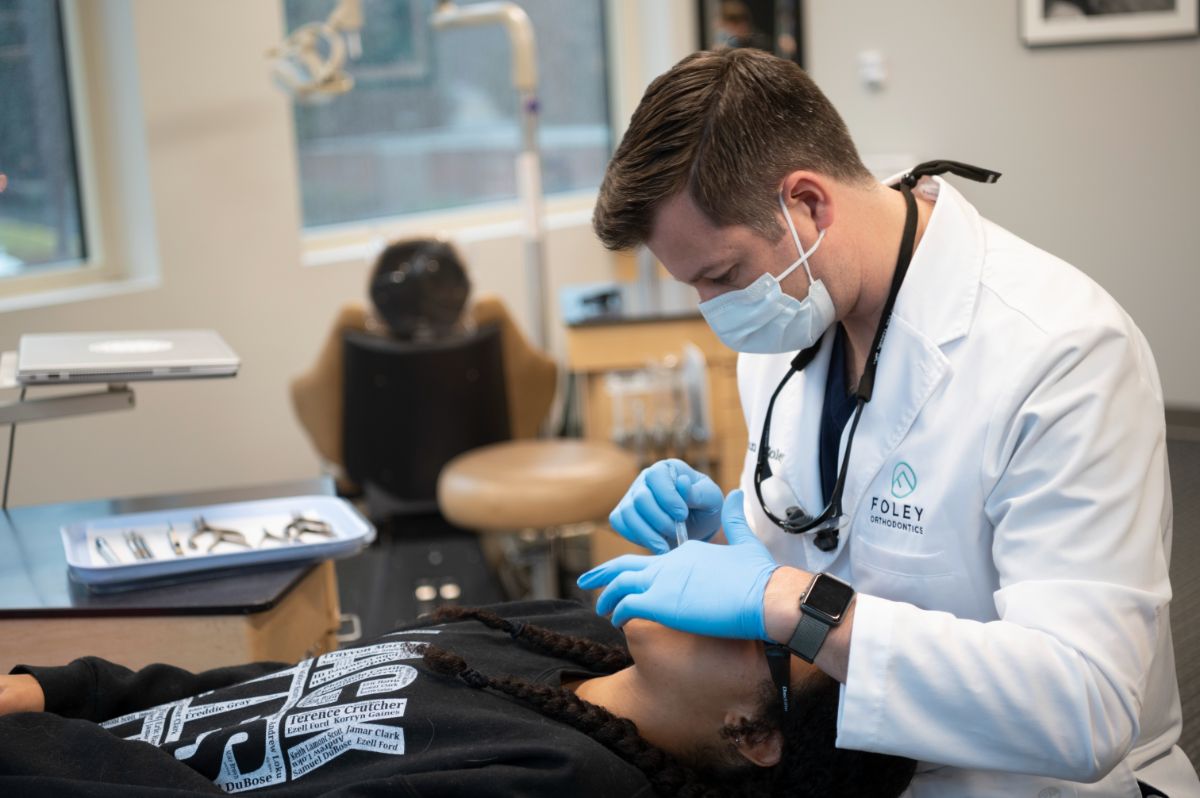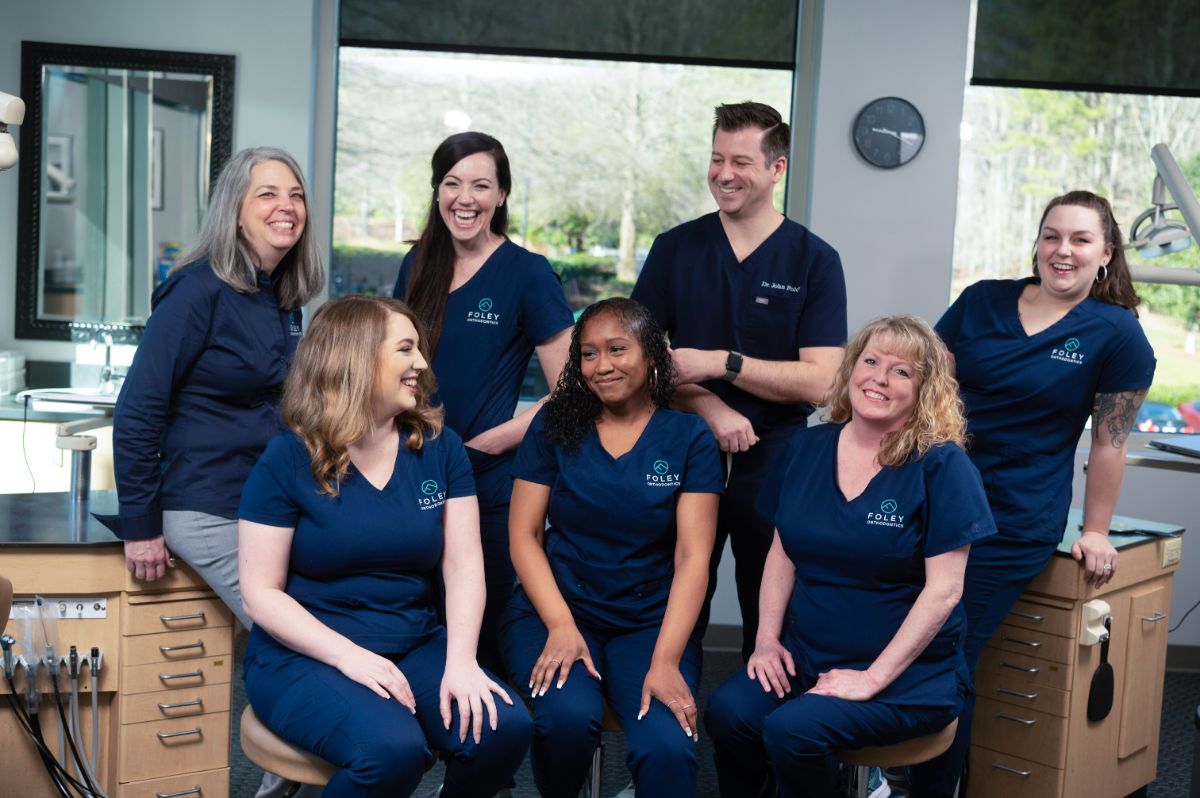In the modern age, social media is king. It is no secret that in recent years we have all become much more vocal on social media outlets when it comes to communicating with our inner circles. Much of this success is positive and comes from the ability to connect people of all backgrounds quickly and easily. But not all aspects of social media are geared for the greater good, and one of the greatest issues facing users is the prevalence of filters designed to create the appearance of perfect facial symmetry by altering the user’s facial features.
While Snapchat, Instagram, and TikTok feature more and more face-tuning filters, our office has seen an uptick in insecurity surrounding facial structure. The hottest new question on our patients’ minds seems to be “What can orthodontics do to fix my facial asymmetry?” While our team at Foley Orthodontics aims to promote a healthier and more realistic body image, we are here to explain the orthodontics behind facial asymmetry and ways you can regain your self-confidence with #NoFilter.
Facial Asymmetry, Defined
Facial asymmetry is the imbalanced appearance of an individual’s facial structures. Keep this in mind: nearly everyone has some degree of facial asymmetry. It is part of being human to have some slight asymmetry which could be caused by genetics, facial growth, or jaw structure.
Usually, this slight asymmetry goes unnoticed or is even considered to be an integral part of what makes you you, but in some more severe cases of asymmetry, anxieties and insecurities may arise. Asymmetries may cause what is known as a “weak” chin, sunken cheeks, or even double chins, and many patients with more noticeable cases feel pressed to find a solution.
When it comes to the orthodontic side of facial asymmetry, we typically chalk it up to the type of bite you have…
Bite Patterns: What are they?
Everyone’s mouth is different, and everyone has some type of bite that falls into one of several categories. Each bite pattern is telling of your jaw structure, and jaw structure plays a huge role in facial symmetry. The first step your orthodontist will take toward addressing your facial asymmetry concerns is determining your bite pattern.
Overbite
Overbites are arguably the most common bite pattern. If your top teeth overlap your bottom teeth when your mouth is closed, you may have an overbite. Not every overbite is in need of correction, but more severe overbites may cause your chin to have a receding appearance known as a “weak” chin.
Underbite
Underbites are recognized by a protruding lower jaw that causes the bottom teeth to rest in front of the top teeth when your mouth is closed. People with underbites may see the greatest change in facial symmetry with the implementation of an orthodontic treatment plan.
Crossbite
Crossbites consist of what looks like a mix of the above two malocclusions (bite patterns), so that in this pattern, some of the front teeth overlap the bottom teeth and some rest behind the bottom teeth.
Open Bite
You will recognize an open bite by the distinctive gap between the top and bottom teeth – they don’t meet in the middle. While this bite pattern can pose a range of issues including difficulty chewing, it can also cause the face to appear longer, meaning that people with this bite pattern may also see significant results with orthodontic treatment.
The Burning Question: Can orthodontics fix my facial asymmetry?
Asymmetry is best addressed when caught at a young age. This is because your jawline is still growing and changing which means it is much more readily influenced by orthodontic treatment. Even still, facial asymmetry can still be corrected in older patients as well with the use of braces and, in more severe cases, corrective jaw surgery.
Typically, however, depending on the unique characteristics of your teeth, your orthodontist will use one of several treatment methods to attempt to bring your bite pattern to a more neutral position in a process called intercuspation. The goal of intercuspation is to align your teeth, and the hope is that by aligning your teeth, the angles of your face and jaw are adjusted to produce a more symmetrical effect without actually, physically changing any of your other facial features. At Foley Orthodontics, we offer the treatment options below to help you feel more attractive.
Metal Braces
As the traditional option, metal braces are often the first that come to mind when considering orthodontic treatment. These braces work by tightening the wire attached to a bracket glued to each tooth. With gentle, continuous pressure, your teeth are aligned over a period of 12-36 months, depending on the severity of your case, your mouth’s response to treatment, and your desired outcome.
Clear Braces
Clear braces work the same way as metal braces. The difference is that clear braces use white, ceramic brackets that blend in with the color of your teeth and provide a less noticeable appearance.
Clear Aligners
This removable treatment option uses a series of clear trays that adjust your teeth without the use of wires or brackets. Because they are clear, this option allows you to straighten your teeth with a look that is almost invisible. By wearing these trays for 22 hours per day for 9-15 months, you’ll see results in no time.
Foley Orthodontics Gets the Job Done
At Foley Orthodontics, Dr. Foley works one-on-one with our patients to get them the results they desire. Although we sincerely hope you don’t let insecurities around facial asymmetry get in the way of your unique and beautiful smile, we know that orthodontic treatment can be a step in the right direction to addressing your concerns in the long run. If you’re ready to meet with one of our doctors to discuss how orthodontics might help you, schedule an appointment here for one of our free consultations!
 Free Consult
Free Consult


